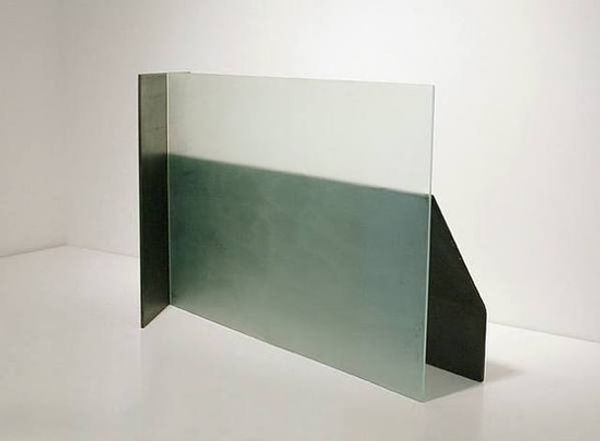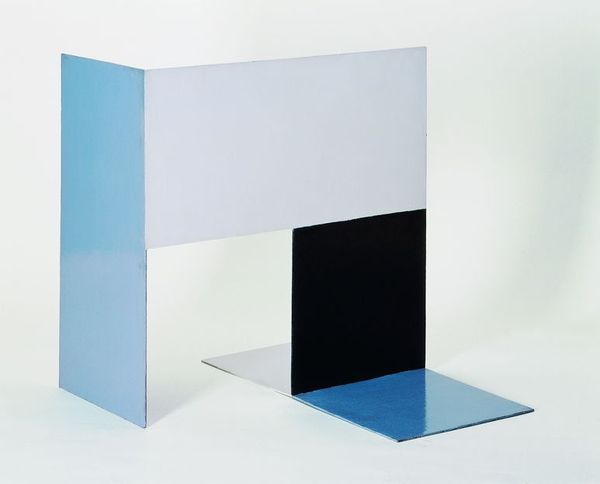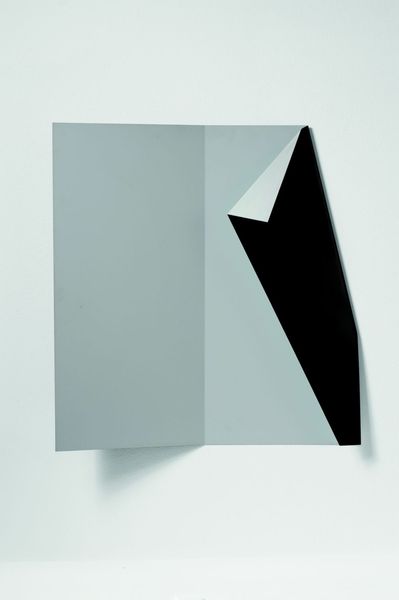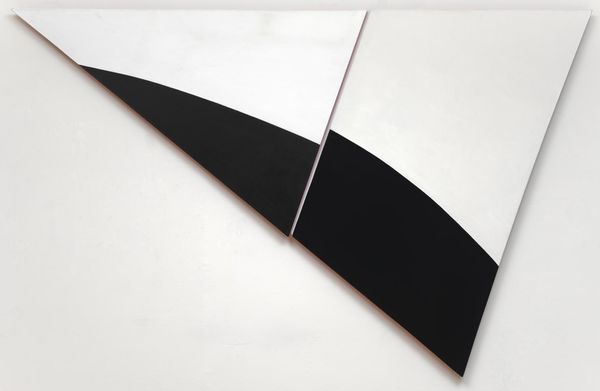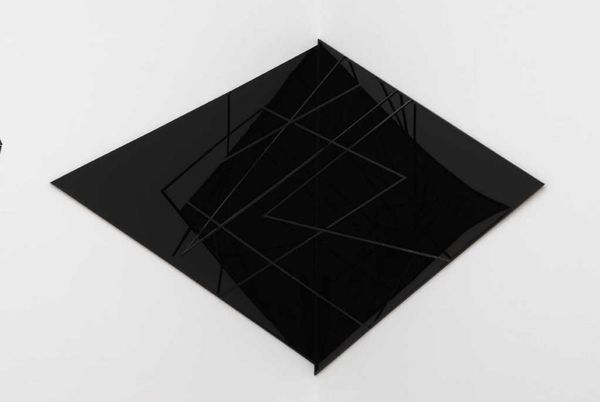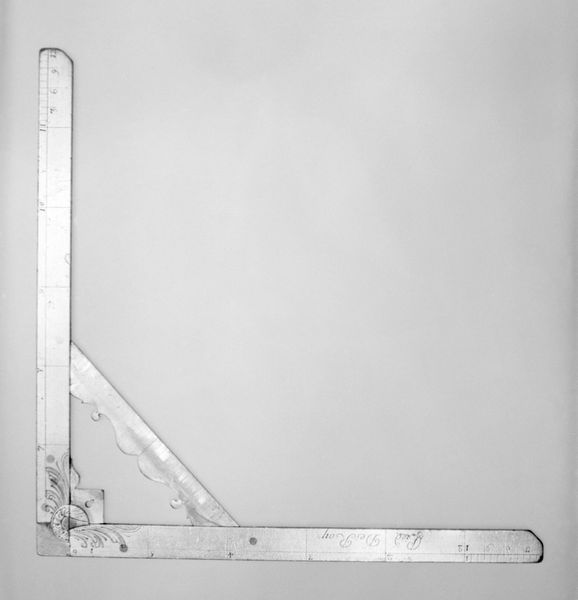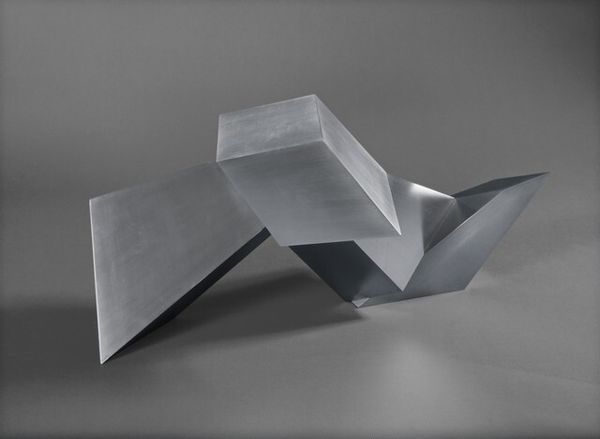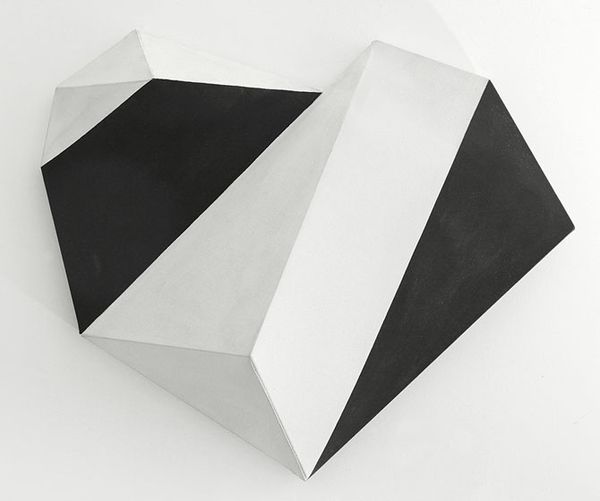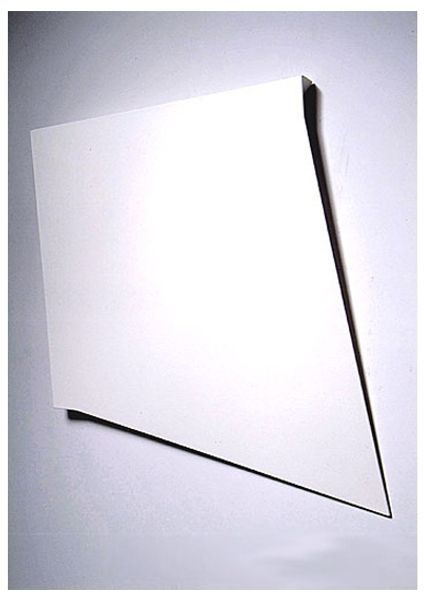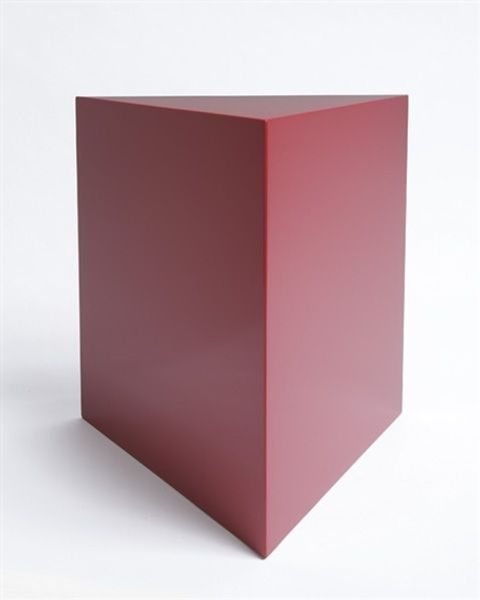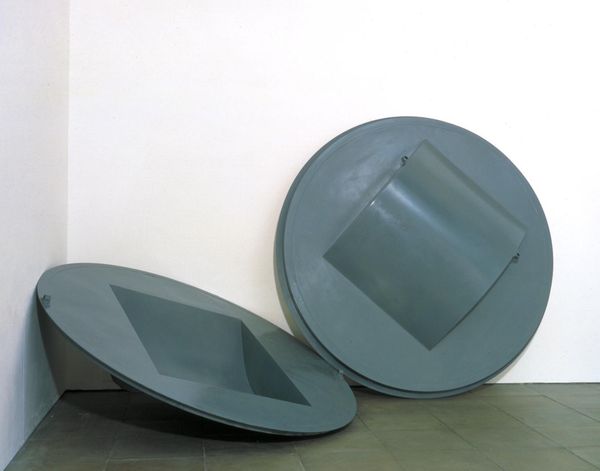
metal, sculpture
#
conceptual-art
#
minimalism
#
metal
#
geometric
#
sculpture
Dimensions: overall: 135.3 x 152.4 x 118.1 cm (53 1/4 x 60 x 46 1/2 in.)
Copyright: National Gallery of Art: CC0 1.0
Editor: We're looking at Christopher Wilmarth's "Clearing," from 1972. It's a sculpture, mainly metal, with a large plane of translucent material. The whole thing looks incredibly fragile, almost temporary. What can you tell me about this work? Curator: Considering "Clearing," let's look at Wilmarth's emphasis on process. He often used industrial materials like steel and glass, treating them in a way that acknowledged their inherent qualities. Note the visible joins and the deliberate way the glass is supported. The “how” of the making is paramount. Editor: So, it's about the artist showing their hand in the piece, highlighting the physical labor? Curator: Precisely. It moves away from traditional ideas of seamless artistic creation, doesn’t it? We are reminded of the means of production. Moreover, the choice of industrial materials questions the distinction between "high art" sculpture and everyday manufactured objects. The material itself is celebrated rather than concealed. Does this piece relate to any artistic movements? Editor: It's giving me minimalism vibes with the geometric form, but with something warmer than some of the cold surfaces I've seen from that movement. Curator: Yes, minimalism is a strong influence, particularly in its focus on materiality and reduction. But there's an element of human touch, isn't there? It avoids complete abstraction and geometric perfection and relates more intimately to the human scale. Think about the ways in which industrial progress, materiality and class are evoked in art in this era. Editor: I see that tension now. It makes me consider what it means to make art about industrial objects that are still being made, bought, and sold. Curator: Right. Reflecting on Wilmarth's work reveals much about our relationship with materials, industrial production, and our conceptions of labor within the arts. Editor: This changes how I view not just the piece but art’s role within an industrial environment!
Comments
No comments
Be the first to comment and join the conversation on the ultimate creative platform.
